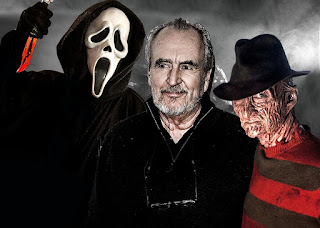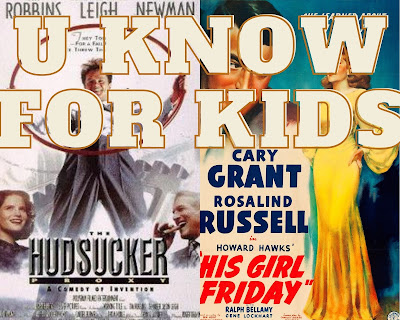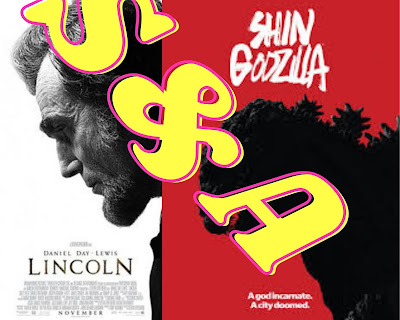S&A Double Feature: BERGMAN AND CRAVEN - THE MEETING OF MINDS
THE VIRGIN SPRING - DIRECTED BY INGMAR BERGMAN 1960
THE LAST HOUSE ON THE LEFT - DIRECTED BY WES CRAVEN 1972
This September and October I'm going to be on a Craven Kick. Wes Craven was the thoughtful Master of Horror. His movies, not matter how schlocky they seemed were reflective and with an ideas weaved into the spine. Throughout his career, Craven reinvented Horror multiple times with the likes of A Nightmare on Elm Street and Scream. His first full length narrative film, The Last House on the Left has a notorious reputation, one of those movies that leans in too far and presses the thumb on the nerve too hard, but at the same time incredibly important in the shaping of the Horror genre in the 1970s. It's one of those movies I have been avoiding. So I decided to have a Schlock and Awe Double with The Last House on the Left and Ingmar Bergman's The Virgin Spring from 1960. Both The Virgin Spring and The Last House on the Left are both based on a Medieval ballad called Tores dottar i Wange (Tores Daughter in Vange). It's the relatively simple if brutal story of the origin of a Medieval Church, where a farmer murders the shepherds who murdered his daughter. It;s the classic tale of revenge and penance. Both Craven and Bergman came from a similar traditional religious background. Bergman's Father was chaplain to the Kind of Sweden at some point. Both have strong traditional values of family and religion that they both work out through their movies again and again.
One movie won an Oscar, the other an exploitation movie, most likely to be shown at the Drive In. But both have the bones of the same source and are dissecting similar ideas of the family unit, violence, religion, revenge, and the chaos that exists in the woods.
What I love about the Ingmar Bergman's I've seen is that I've seen exist in a pastoral wonderland. It's full of rituals, travelling performers and storytellers. In movies such as Seventh Seal and Sawdust and Tinsel, the characters are often caught between civilization and the wild hills of Sweden. The Virgin Spring feels like a fairy tale, a young girl heads into the forest to find the Big Bad Wolf. Karin lives in the safety of her house with her family, a good Christian family, farmers of the land. But outside influences are still creeping into the house, the movie opens with the house servant praying to the Norse God Odin. Like Bergman's other movies, The Virgin Spring exists between two spaces, this time, Christianity and Paganism, the House and the Forest. Each place goes by different rules and cannot co-exist. This reflect the battle between Christianity and Paganism in the early Middle Ages. Of course, the wonderful thing about Bergman, he can be read multiple different ways. On my first watch I see The Virgin Spring as the battle for Sweden's soul. But who knows what I'll see on further watches. Innocent Karin wonders into the Woods to go to the Church, but meets three shepherds. While offering food, they rape and kill her. There is a beautiful and brutal starkness to The Virgin Spring. Bergman makes you live in the silence of the moment. Actual silence, no sound design what so ever. It's the silence of contemplation, of guilt. It's the violence of nature and it's Pagan Gods that murdered Karin and infects the Farmer's (played by the legendary Max von Sydow) house. More Violence begets more violence. The two entities cannot coincide. With the evidence of Karin's horrific death, Sydow does not think or plan, he kills as violently and mercilessly as the Shepard's murdered Karin. The only thing Sydow can do after-wood is pray. Because otherwise there is nothing, just the silence that pervades The Virgin Spring.
Last House on the Left is a tough watch. We Craven set out to make the scariest movie he could think of. But it feels like Craven didn't know where the line is, and not only crosses it, Craven keeps hiking away from it. I had to pause Last House on the Left a couple of times and go and stand in the sun, there's a sadistic quality I couldn't and wouldn't wrap my head around. Over all Last House an unpleasant mess of a movie, where the switching tones are almost offensive even if it defined what 1970s Horror would be. More importantly, you can see how Craven's brain working in what was meant to be a sleazy 16mm exploitation movie. The Gothic fairy tale quality of Bergman's movie has been taken out of it, it's more stark and maybe unfortunately realistic.
Unlike The Virgin Spring, God nor any other higher power is involved. But like The Virgin Spring are still in a time of transition, the 1960's and the hippy movement, The Manson Family and other serial killers, the Women's Liberation, Civil Rights, Anti War Protests and 1972 is the year the Watergate Hotel has been broken into. America - the amplifier of popular culture is seemingly bending bend and changing. It is here where a man with a strict Baptist background and who wasn't allowed to watch movies growing up tries to distill all this in an exploitation movie produced by Sean Cunningham.
It's in this world that Mari and Phyllis leave their safe traditional home for. Craven keeps highlighting this, with Mari's parents preparing a surprise party for her return. It's the contrasting that for me doesn't work, it's to the point of offensiveness. What is happening in that forest is horrific. Bergman makes you sit in silence, Craven makes you sit in the terror and violence, and it's hard. The shot composition is shaky and fees a touch too homemade. In saying this, it can be beautiful in it's ugliness. Mari walks into the lake because it's the only thing she can think to do, maybe to feel clean again after attack - it's reminiscent of the Sir John Everett Millias paint Ophelia in 1852. In Shakespeare's Hamlet, Ophilia also goes into the lake after being driven mad. This is also Mari.
Craven just doesn't hold onto Mari but also of Grug, Sadie and Weasel. They also have to sit in what they have done just as the audience has. Craven focuses in them trying to wipe the blood and twigs off their hands. It's an odd contemplative moment, that gives the murderers a brief moment, maybe not humanity but reflection. Even with these moments of insight, The Last House on the Left never reaches the heights I think it's trying to. It's meant to be a rape/revenge movie. But because it is unwatchable at times and chops and changes, you ever feel that necessary release when Mari's parents exact their revenge. Even when the booby traps and chainsaw comes out, I just feel tired. It doesn't take the power away from Last House, but I don't think it completely achieved what it sets out too. The tones in the violence are just too different. What Last House does show is the musings of a director who was trying to figure out the world around him.
Both The Virgin Spring and The Last House on the Left feel like movies where the Directors are trying to figure out the world around them. Especially compared to their childhood homes. The outside world can be a scary place, too many things that cannot be controlled. At the end of the day Ingmar Bergman and Wes Craven are not that different film makers. They were both idea driven filmmakers, even if they are placed in different areas of the video store, critics best of lists and even genres.








Comments
Post a Comment